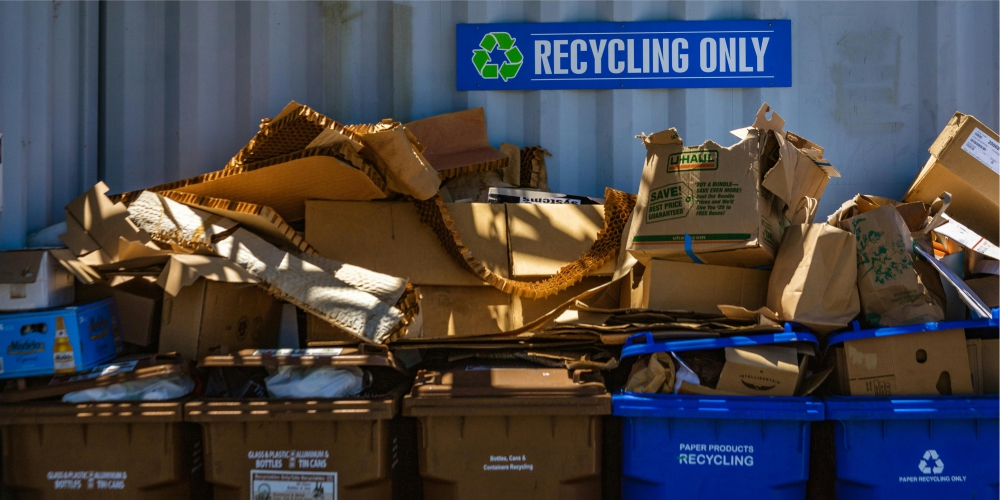Stash the Trash
by Hudson Cooper
In 1968 Stanley Kubrick released the film 2001: A Space Odyssey. It is a futuristic look at space travel, computers and the existence of alien life on other planets. Ironically as NASA puts rovers on Mars and eventually establishes astronauts on the surface, we will become the alien life forms. But I digress. The opening scene in Kubrick’s film is about a large black monolith that gets discovered by a tribe of apes. The apes predate our human existence and their tribal reaction represents the dawn of man. They are stunned by the monolith’s existence and react with a combination of awe, puzzlement and eventually violence.
I exhibit that combination of awe and puzzlement when I approach recycling bins. You probably know the ones I am talking about. Usually, they consist of three separate containers labeled compost, landfill and recycling. The latter is already confusing; is not the whole process recycling?
Years ago, the only items most of us considered recycling were aluminum cans and plastic or glass bottles. It was an easy process. Take a final sip of that can of Super Fizzy Orange Quench soda and place it in the plastic bag to be recycled. Once the bag was full you either dragged it to the supermarket for the five cents per can return or left it near the other garbage to be picked up by the truck that comes by at 6 a.m. thus eliminating the need for an alarm clock. In today’s world most towns have bottles and cans recycling centers that count your plastic bag contents and pay you the five cents per item. How does that work when you paid the five-cent deposit at purchase?
I spoke to the proprietor of my local can and bottle recycling center as she handed me the $2.20 for my efforts to save the planet. She explained that a company pays her ten cents per bottle or can when they come to pick up her thousands of items. So, she clears five cents per can or bottle. She would need to give the collector 20,000 items just to pay the rent assuming it was $1,000. That is a lot of empty Poland Spring, Mountain Dew, Sprite and Yoo-hoo containers. With other mandatory monthly costs such as food, utilities and Netflix it is more likely that 100,000 cans and bottles are needed. And yes, they still sell Yoo-hoo!
Now that we crunched the numbers regarding bottles and cans, let us explore the other items to be recycled. As I approach the three recycling bins mentioned earlier, I morph into the monolith-confused apes from Kubrick’s film. I read the list of items and examine the second-grade level drawings of what goes where. I hold the paper wrapping from my BLT lunch order. Since both the recycling and compost bins include paper items, I do the old “eeny-meeny miny mo” and drop it into the compost bin. I go through the same random decision-making process with a mustard-stained piece of aluminum foil, a cardboard container that contained ketchup-soaked French fries and the plastic wrapper that held my dessert of Ring Dings. And yes, they still sell Ring Dings!
Now approaching Defcon 1 with awe and puzzlement, the monolith-ape response of violence takes over as I angrily toss everything else in the landfill bin grateful for its written welcoming of “Miscellaneous.”
I have a better solution to the recycling dilemma. Everything we buy should have a visible designation of a circled 1,2 or 3. The numbers represent recycling, landfill and compost. Each of those bins has no written or drawn descriptions, just a large number 1,2 or 3. By eliminating our judgment calls, a simple reading of a number would lead us to the correct bin.
And yes, I still incorporate “eeny-meeny miny mo” in my decision making although I never want to catch a tiger by the toe.
This article first appeared as one of Hudson Cooper's weekly "Random Thoughts" columns in the Sullivan County Democrat newspaper.


